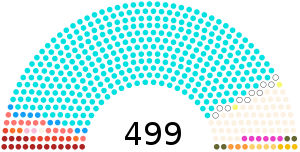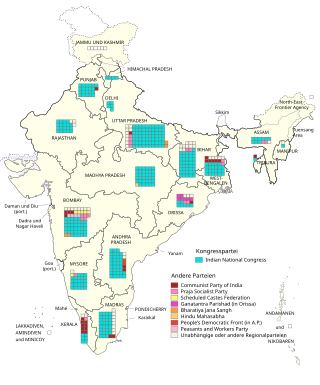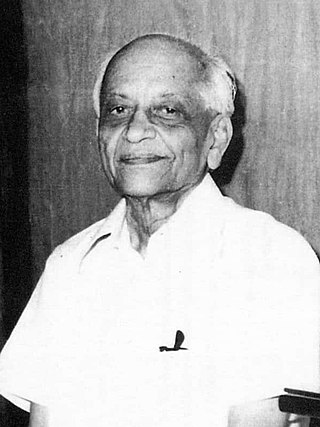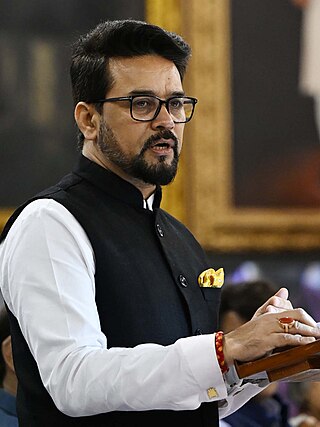| |||||||||||||||||||||||||
489 of the 499 seats in the Lok Sabha 245 seats needed for a majority | |||||||||||||||||||||||||
|---|---|---|---|---|---|---|---|---|---|---|---|---|---|---|---|---|---|---|---|---|---|---|---|---|---|
| Registered | 173,212,343 | ||||||||||||||||||||||||
| Turnout | 44.87% | ||||||||||||||||||||||||
| |||||||||||||||||||||||||
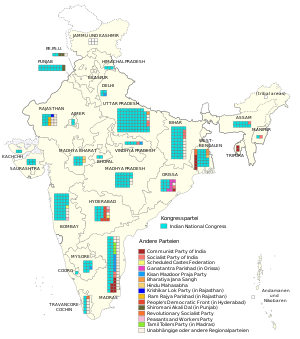 | |||||||||||||||||||||||||
| |||||||||||||||||||||||||
General elections were held in India between 25 October 1951 and 21 February 1952, the first democratic elections after India attained independence in 1947. [1] [2] [3] Voters elected the 489 members of the first Lok Sabha, the lower house of the Parliament of India. Elections to most of the state legislatures were held simultaneously. [4]
Contents
- Contesting parties
- Results
- Results by state
- Government formation
- Notable losses
- See also
- References
- Further reading
The elections were conducted under the provisions of the constitution adopted on 26 November 1949. After the adoption of the constitution, the Constituent Assembly continued to act as the interim parliament, while an interim cabinet was headed by Jawaharlal Nehru. An Election Commission was created in 1949 and in March 1950 Sukumar Sen was appointed as the first Chief Election Commissioner. A month later parliament passed the Representation of the People Act which set out how the elections for parliament and state legislatures would be conducted. [5] The 489 seats of the Lok Sabha were allotted across 401 constituencies in 25 states. There were 314 constituencies electing one member using the first-past-the-post system. 86 constituencies elected two members, one from the general category and one from Scheduled Castes or Scheduled Tribes. There was one constituency with three elected representatives. [6] The multi-seat constituencies were created as reserved seats for backward sections of society, and were abolished in the 1960s. The constitution at this time also provided for two Anglo-Indian members to be nominated by the President of India.
A total of 1,949 candidates competed for 489 seats in the Lok Sabha. Each candidate was allotted a different coloured ballot box at the polling booth, on which the candidate's name and symbol were written. 16,500 clerks were appointed on a contract of six months to type and collate the electorate rolls and 380,000 reams of paper were used for printing the rolls. [7] A total of 173,212,343 voters were registered (excluding Jammu and Kashmir) out of a population of 361,088,090 according to the 1951 census, making it the largest election conducted at the time. All Indian citizens over the age of 21 were eligible to vote.
Due to the harsh climate and challenging logistics, the election was held in 68 phases. [8] A total of 196,084 polling booths were set up, of which 27,527 booths were reserved for women. The majority of voting took place in early 1952, but Himachal Pradesh voted in 1951 as its weather was commonly inclement in February and March, with heavy snow impending free movement. [9] The remainder of states voted in February–March 1952, except for Jammu & Kashmir, where no voting took place for Lok Sabha seats until 1967. The first votes of the election were cast in the tehsil (district) of Chini in Himachal Pradesh. [10]
The result was a landslide victory for the Indian National Congress (INC), which received 45% of the vote and won 364 of the 489 seats. The second-placed Socialist Party received only 11% of the vote and won twelve seats. Jawaharlal Nehru became the first democratically elected Prime Minister of the country.


